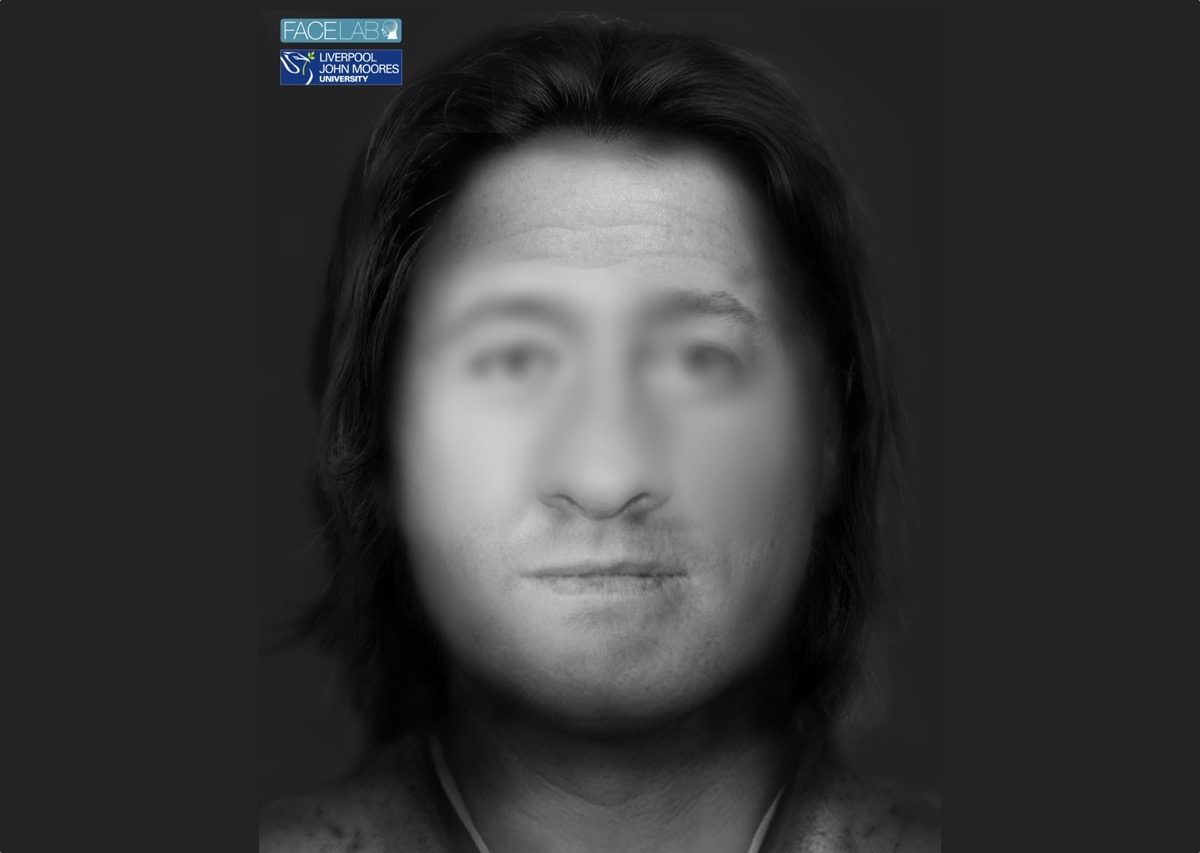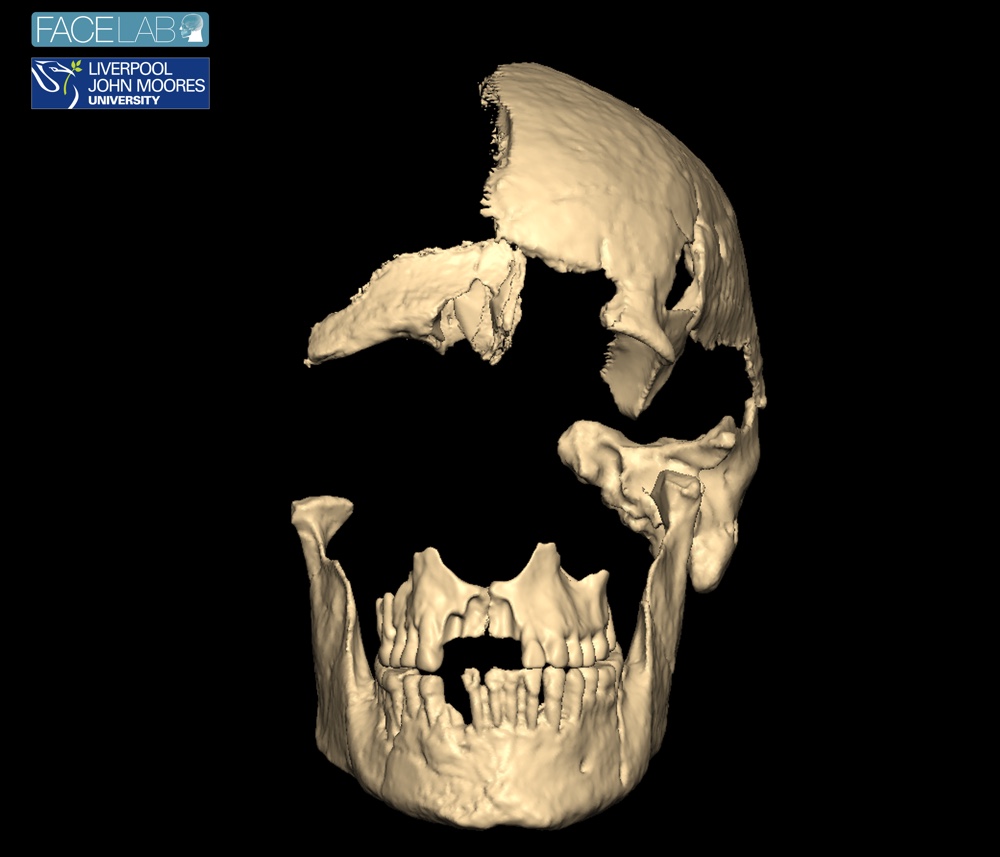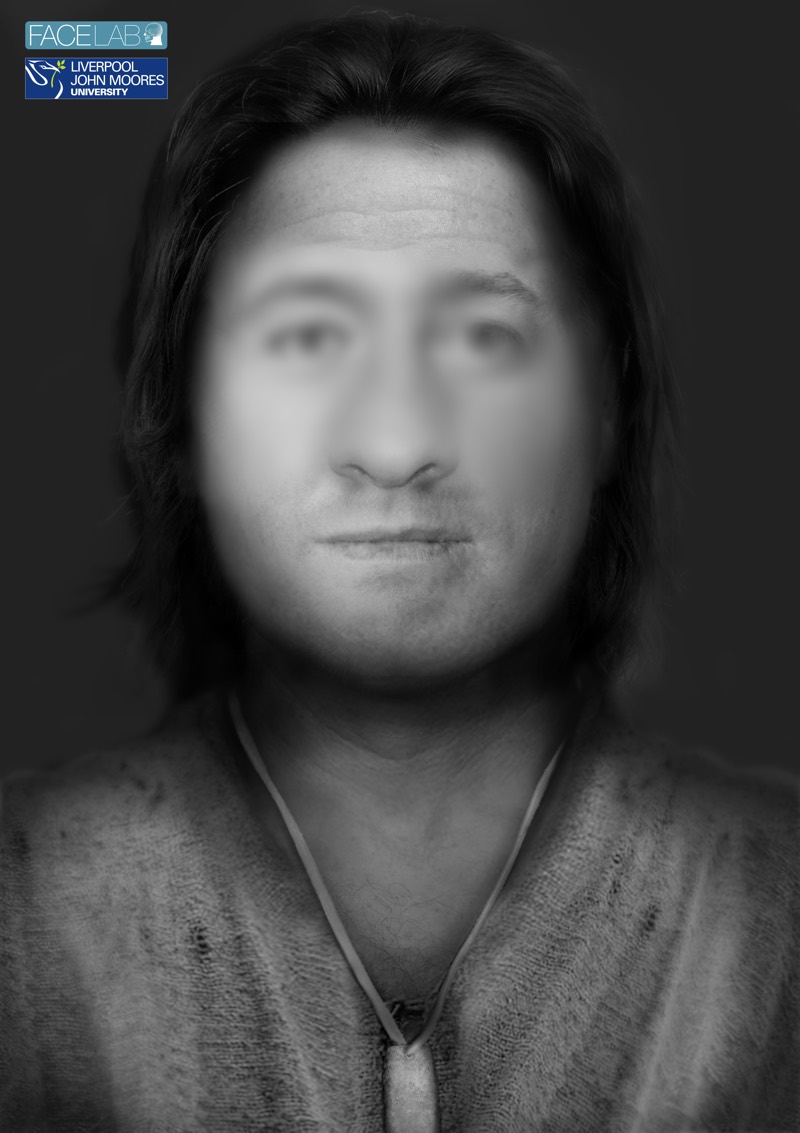'Striking' Face of 4,500-Year-Old English Man Revealed

The face of a man who died in England around 4,500 years ago has been reconstructed, revealing a "striking" image that should help humans alive today feel a personal connection, researchers said.
The man's remains were excavated in the 1930s and 1980s at Liff's Low bowl barrow, a burial mound located in Derbyshire, England. He was found buried with a type of pot called a beaker and a stone pendant that was likely worn on a necklace, the researchers said.
Anthropological analysis done in the 1980s found that the man was about 5 feet, 7 inches (1.7 meters) tall and was between the ages of 25 and 30 when he died, said Claire Miles, a collections assistant at the Buxton Museum. The anthropologists at the time found that the man had a fracture in his left elbow that had "healed poorly," Miles said, noting that the cause of the man's death is unknown. [In Images: Face of Ancient Long-headed Woman Reconstructed]
The museum commissioned Face Lab, a team of forensic specialists at Liverpool John Moores University, to reconstruct the man's face ahead of an exhibit featuring his remains scheduled to open in September.
Using a mix of technology, including an Artec 3D scanner, the Face Lab forensic experts reconstruct the faces of people who died many centuries ago as well as those who died recently and are the subject of police investigations.
Jigsaw puzzle
The team scanned each facial bone using the Artec 3D scanner, placing the digital counterparts of the surviving bones together on a computer screen like a "jigsaw puzzle," said Jessica Liu, a doctoral student at Liverpool John Moores University and member of the Face Lab team.
Some of the man's facial bones did not survive the passage of time, and the Face Lab team had to estimate the appearance section of the man's face using the data they had. The team blurred part of the reconstruction so that viewers would know which part of the man's face had been estimated.
Get the world’s most fascinating discoveries delivered straight to your inbox.
In the end, the team was able to create a black-and-white reconstruction that Miles said is "quite striking" and will "allow visitors to make some sort of personal connection.
"This reconstruction really allows us to give a new interpretation," Miles said, adding that facial reconstructions "allow people to see them [ancient peoples] as people rather than a set of bones and hopefully make them interested in the way that they lived."
The Face Lab team is currently working on a facial reconstruction of a 2,700-year-old Egyptian female mummy called Ta-Kesh, which is now at the Maidstone Museum in Maidstone, the United Kingdom.
Original story on Live Science.

Owen Jarus is a regular contributor to Live Science who writes about archaeology and humans' past. He has also written for The Independent (UK), The Canadian Press (CP) and The Associated Press (AP), among others. Owen has a bachelor of arts degree from the University of Toronto and a journalism degree from Ryerson University.




